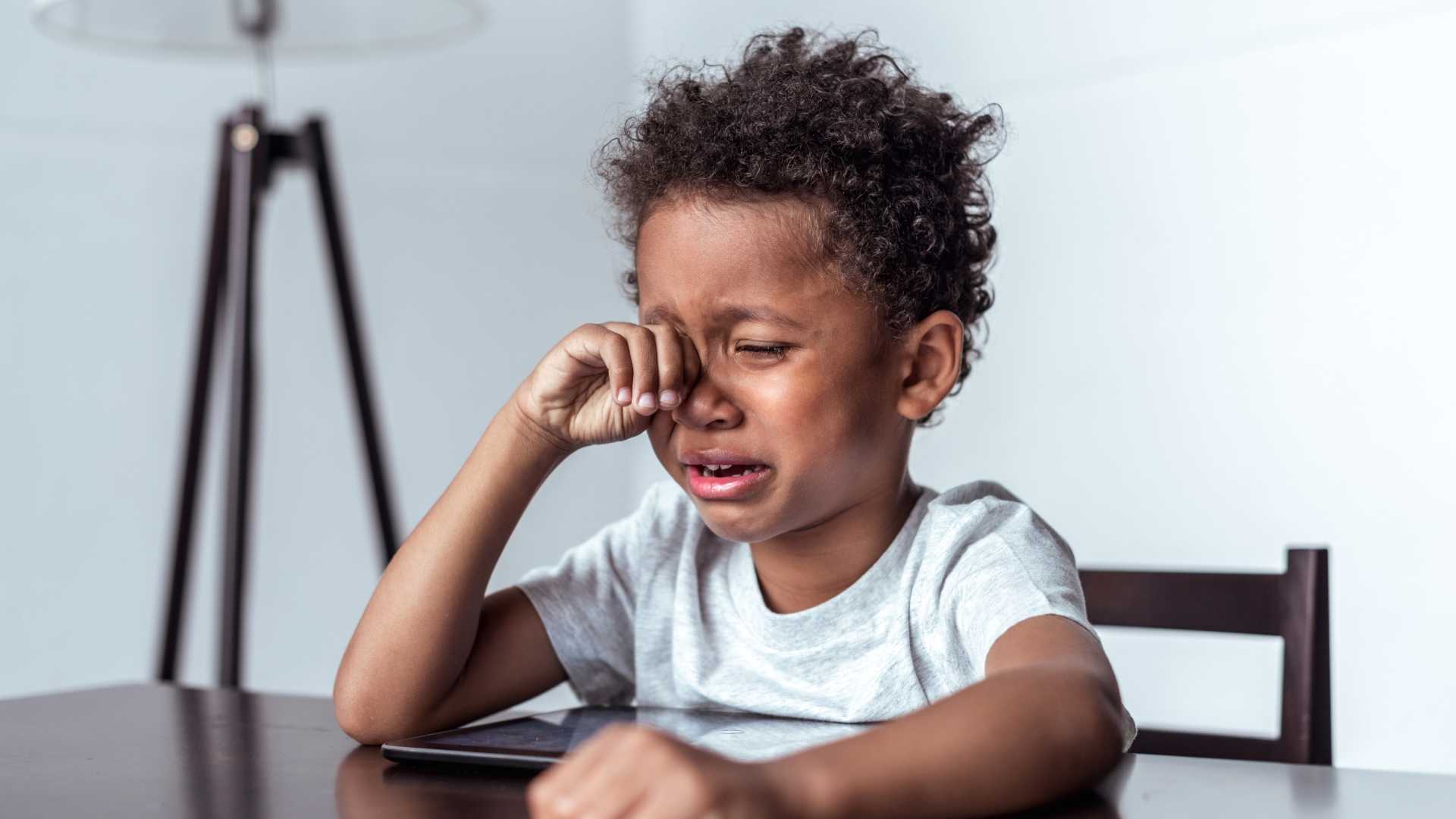on
BY SIMONE J. SMITH
“My daughter seems to be lacking personal boundaries and seems extremely clingy. She doesn’t talk a lot and sometimes needs to be dragged into her new preschool. When she’s uncomfortable or upset, she screams at a pitch that pierces the ears.” (Mother speaking about her 6-year-old daughter)
He flies into a rage at the drop of a hat, slamming doors and yelling at the top of his lungs. Mom and dad just stood there looking stunned.
“I notice that he is having difficulty finishing his school work. He doesn’t want to own up to the mistakes he is making, if anything he hides them. If he fails at something, he won’t make any attempt at trying again.”
There are more and more reports coming in from parents about changes they are seeing in their children. Emerging evidence reveals an uptick in developmental delays and challenging behaviours in children belonging to what is now being called the “COVID generation.” These are children that were born during or shortly before the pandemic. Many of these children are talking, walking and interacting later and less frequently.
These children are prone to certain behaviours, such as outbursts, physical aggression and separation anxiety.
It’s unclear how much the COVID-19 pandemic and related economic fallout are to blame. Experts note many children have had uneven access to health and childcare and relatively little exposure to the outside world.
During these last couple of years, the brains of our children have continually been exposed to stress. All the emotional experiences, the lack of interaction; their brains became wired to assume that the environment was going to always be like that.
According to a handful of small studies published within the past few months, children born during the pandemic scored lower on average on tests of gross motor, fine motor, social and problem-solving skills compared with those born before COVID-19. For instance, a 6-month-old pandemic baby is less likely than a previous 6-month-old to get into a crawling position or smile at herself in the mirror – both of which are milestones for that age group.
Scientists all over the world are sharing reports of just how damaging the lockdowns have been on our children, and I share these with you because we as a community have to do something now for them before it is too late. Let’s start with how the lockdowns have affected children’s health.
According to paediatricians at the Yale New Haven Children’s Hospital, children have begun piling into the hospital with an alarming number of respiratory viruses, even though the regular flu season is over.
The viruses found include rhinovirus (the cause of the common cold, which rarely hospitalizes people), adenovirus, human metapneumovirus, respiratory syncytial virus, influenza, and parainfluenza. They’ve even begun diagnosing more kids with COVID.
Doctors who have been dealing with these sudden surges say that it can be attributed to lockdowns and isolation from everyday activities that would have built up young immune systems.
“It’s a massive natural experiment,” said epidemiologist and chief science officer at eMed Michael Mina.
“The moment you stop seeing a virus on this regular cadence, as happened during the pandemic, that natural balance is upset,” he continued.
He adds that not only has this time away from regular life impacted the ability to fight off viruses, but it’s also increased the window for kids to be infected by viruses rarely experienced outside fall and winter.
We have heard about how this pandemic has hurt our children mentally, but let us dig a little deeper. There is a lot of evidence about the damage caused by COVID-19 restrictions to children’s mental health. The impact has been alarming. In a report by Collateral Global, eight out of ten children and adolescents report an increase in negative feelings due to the COVID-19 pandemic. School closures contributed to increased anxiety, loneliness and stress; negative feelings due to COVID-19 increased with the duration of school closures.
The Hart Group released a detailed research report that showed one in six children were reporting significant mental health problems, and one in four young people felt unable to cope. The surge in mental health problems led to record numbers of children being prescribed antidepressants.
The cumulative mental health consequences of 18 months of pandemic restrictions was summarized in a recent comprehensive review of the research evidence, carried out by Collateral Global, which concluded that the impact on children and adolescents was ‘severe’, with 80% of young people reporting a deterioration in their emotional wellbeing.
Another report found that five times more children and young people committed suicide than died of COVID-19 during the first year of the pandemic in the U.K.
The effects of the pandemic on children are being seen world wide, and with the surge of reports coming out, certain things are undeniable.
There was a report issued by UNESCO and then jointly reissued with UNICEF and the World Bank that is damning. The report showed that school closures carried high social and economic costs for people across communities. The impact however was particularly severe for the most vulnerable and marginalized boys and girls and their families. They were deprived of opportunities for growth and development. Schools are hubs of social activity and human interaction, and when schools closed, children and youth missed out on social contact that is essential to learning and development.
When the pandemic was at its peak, school closures affected 1.6 billion children in 188 countries. Education systems were on average fully closed for 121 instructional days and partially closed for 103 days. Classroom closures continue to affect more than 635 million children globally, with younger and more marginalized children facing the greatest loss in learning after almost two years of dealing with the pandemic.
In South Africa, school children are between 75% and a whole school year behind where they should be, with up to 500,000 having dropped out of school altogether between March 2020 and October 2021.
In Ethiopia, primary age children were estimated to have learned between 30-40% of the math they would have in a normal school year.
In Mexico the number or 10–15-year-olds not able to read has risen by 25%
A study in JAMA found that compared with the historical cohort, infants born during the pandemic had significantly lower scores on gross motor, fine motor, and personal-social skills.
In France, a study titled “Adverse Collateral Effects of COVID-19 Public Health Restrictions on Physical Fitness and Cognitive Ability” found that physical fitness, particularly cardiorespiratory fitness, is strongly associated with academic achievement in children and adolescents. The present work highlights an alarming decline in both overall physical fitness and cognitive performance among primary school French children due to the public health restrictions imposed in order to slow down the spread of the COVID-19 virus.
As the years go by, reports like these will surface, and although the damage has been done, we have to take a serious look at how this pandemic was handled, and how we can do things differently in the future. I really hope that our elected officials have taken time to analyse the research coming out globally about how badly this pandemic was handled, and how certain decisions have seriously impacted our children.
Stay in the loop with exclusive news, stories, and insights—delivered straight to your inbox. No fluff, just real content that matters. Sign up today!
We, as humans are guaranteed certain things in life: stressors, taxes, bills and death are the first thoughts that pop to mind. It is not uncommon that many people find a hard time dealing with these daily life stressors, and at times will find themselves losing control over their lives. Simone Jennifer Smith’s great passion is using the gifts that have been given to her, to help educate her clients on how to live meaningful lives. The Hear to Help Team consists of powerfully motivated individuals, who like Simone, see that there is a need in this world; a need for real connection. As the founder and Director of Hear 2 Help, Simone leads a team that goes out into the community day to day, servicing families with their educational, legal and mental health needs.Her dedication shows in her Toronto Caribbean newspaper articles, and in her role as a host on the TCN TV Network.













